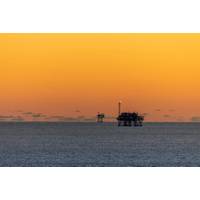New techniques for foundation installation reduce cost of offshore wind farm
As part of a development project related to the future offshore wind farm ”Parc éolien en mer de Fécamp” in France, MT Højgaard is to install a deep water concrete foundation employing new techniques that will reduce cost of offshore wind farm. The newly developed prototype foundation is based on proven technologies known from the oil and gas, tunnel and bridge industry and in combination with the installation method.
The foundation is to be towed about 25 kilometres into the Channel from Le Havre, and then placed in the exact position where the depth of the sea is 35 metres.The installation of the prototype foundation will take place at the end of 2014.
"We expect that this type of foundation combined with the method of installation can be a game changer in the market and can lead to considerable installation cost savings," says Kim R. Andersen, Vice President, MT Højgaard, Offshore & Steel Bridges.
As the offshore wind farms are moving into deeper waters, the installation costs are one of the barriers to making offshore wind an economically viable source of energy. Thus it is imperative that the industry reduces cost. Together with the Norwegian company, Seatower, and the French construction contractor, Eiffage Travaux Publics, MT Højgaard has just contracted on a development project related to “Parc éolien en mer de Fécamp” to install this prototype foundation in the English Channel. Seatower has designed the foundation, Eiffage Travaux Publics is to manufacture it in France, and MT Højgaard will be in charge of the installation. The future offshore wind farm is owned by the French energy company EDF Energies Nouvelles, Danish DONG Energy and German wpd Offshore.
The foundation is a concrete gravity base foundation. It will be towed by tug boats to the wind farm location where it will be lowered onto the sea bed by letting water flow into the foundation structure itself. The transport by sea using tugs reduces costs dramatically compared to an installation requiring a large installation vessel which is far more susceptible to weather conditions. This extends the operational weather window, and the speed of installation is expected to improve. Moreover, several installations can be carried out in parallel, using several tugs.
The method of installation is considerate to the environment because the seabed is less strained and because it does not have an adverse impact on the animal life.
"With more than 20 years of experience we are among the most experienced players in the installation of monopiles. The experience from the Fécamp development project is to be used for defining the standards for the next generation of foundations for deep water offshore wind farms," says Kim R. Andersen.



